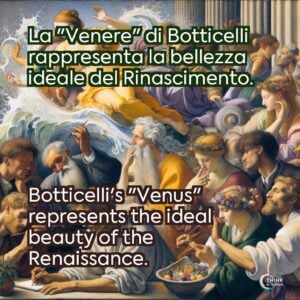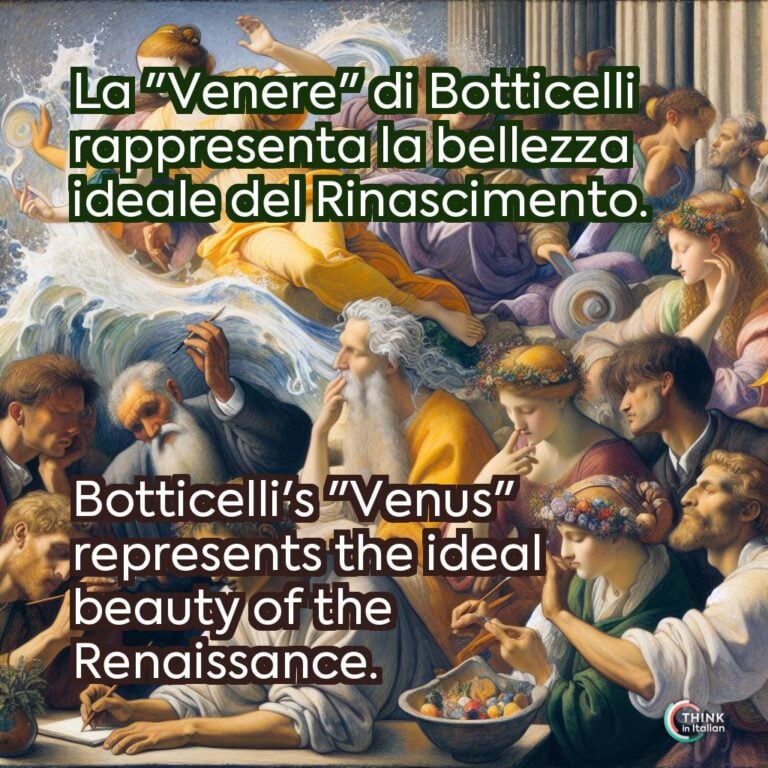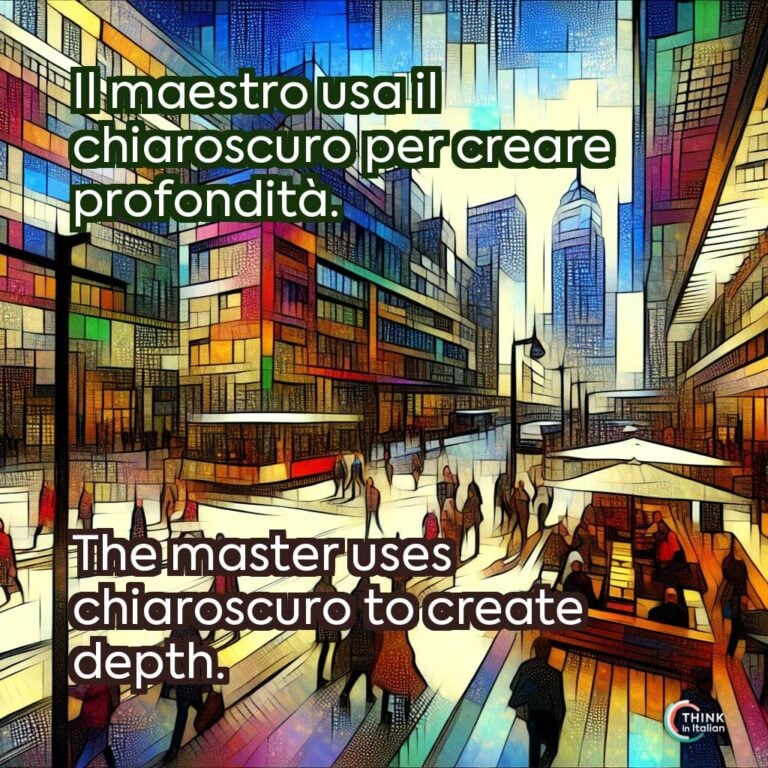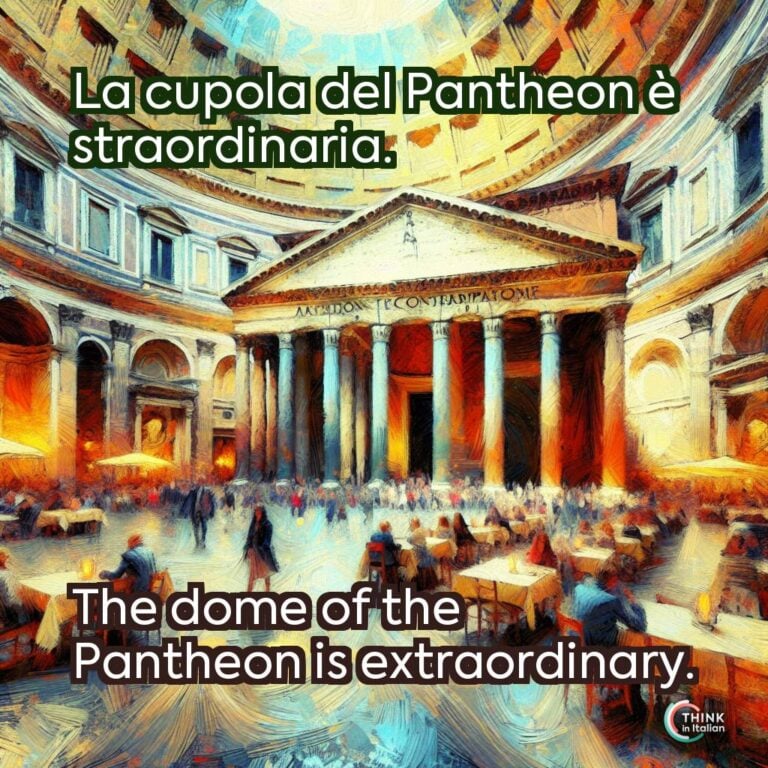Exploring Italian Art Vocabulary
Italy is known as the birthplace of some of the greatest art in history, like Leonardo da Vinci and Michelangelo. For me, the reason why Italian art is so special is not just the art itself, but also language that gives life to these creations.
In fact, Italian is often called la lingua dell’arte (the language of art) because it has a beautiful sound, a rich vocabulary, and a deep history. If you want to connect more to the European and Italian culture, then expand your vocabulary by learning the words of art.
Learning these terms will also allow you to better understand the history of the Italian language, why some words are the way they are and what they originally mean.
Italian art Terms
“Art” in Italian
Let’s start from the basics: the word for “art” in Italian is arte. If you visit an art gallery, for instance in Rome or Florence, you might see a sign saying mostra d’arte (art exhibition). Interestingly, the word mostra comes from the verb mostrare (to show)!
Anther important word is, of course, pittura (painting). But my favorite one is capolavoro which means “masterpiece”. I like this word because it combines capo (chief or head) and lavoro (work), meaning the highest quality work.
You might be familiar with some of these words already, since these Italian words are commonly used in English, as well as in other languages. It is a very common phenomenon, especially when words capture specific ideas, concepts, or cultural elements.
For instance, in the cases of Italian words with no equivalent in English or words that perfectly describes something unique, these terms often get borrowed and become part of everyday vocabulary across different cultures.
In the case of Italian art terms, words like fresco, Renaissance, chiaroscuro, or sfumato have become part of the global vocabulary. They convey specific techniques, styles, or periods that originated in Italy, and there aren’t direct translations that carry the same meaning.
Colors, Shapes, and Techniques in Italian Art
Colors are very important in Italian art, and knowing the Italian words for colors can help you understand Italian art better. Let me show you the most common colors in Italian:
| Italian | English |
|---|---|
| Rosso | Red |
| Blu | Blue |
| Giallo | Yellow |
| Verde | Green |
| Arancione | Orange |
| Viola | Purple |
| Rosa | Pink |
| Marrone | Brown |
| Nero | Black |
| Bianco | White |
| Grigio | Gray |
| Azzurro | Light Blue |
| Beige | Beige |
| Oro | Gold |
| Argento | Silver |
For example, the color rosso (red) often symbolizes passion and intensity in Italian art, while verde (green) can symbolize nature, fertility, and hope. Bianco (white) is typically the color of pureness, while nero (black) is the darkness, the unknown, the scary.
Italian art also has many words for describing techniques and styles. For example, affresco (fresco), which is a method of painting on wet plaster. An example of fresco is Michelangelo’s work on the ceiling of the Sistine Chapel.
If you like art as I do, then you’ll be interested in learning words related to shapes and forms as well. These include terms like forma (shape), linea (line), composizione (composition), prospettiva (perspective), and simmetria (symmetry).
Different art Forms and Movements
Italian art includes many different forms, such as pittura (painting), scultura (sculpture), and architettura (architecture), each with its own vocabulary.
For painting, you might see terms like tela (canvas), pennello (brush), and vernice (paint), while for sculpture, you can use words like marmo (marble), statua (statue), and scalpello (chisel). In architecture, you might encounter words like cupola (dome), arco (arch), or colonnato (colonnade).
Italian art Movements
Italy is the birthplace of Rinascimento (Renaissance) which literally means “rebirth”. This period started in the 14th century and changed the world of art, literature, and culture.
Another important period for Italian art is the Barocco (Baroque), known for its dramatic style, emotion, and movement. Bernini is a perfect example of Baroque art.
Moving into the 20th century, you’ll see movements like futurismo (Futurism) and surrealismo (Surrealism), which are two artistic periods that I personally love.
Famous Italian Artists
Italian artists have shaped the world of art: Leonardo da Vinci, often seen as the ultimate Renaissance man, is famous for his brilliant art and inventive ideas.
Michelangelo is known for his sculptures like David and La Pietà, where he showed incredible skill in capturing human emotion and form.
Other important Italian artists include Raffaello, famous for his harmonious and balanced compositions that define High Renaissance art.
Caravaggio is recognized for his dramatic use of light and shadow, the famous chiaroscuro that revolutionized Baroque painting.
Finally, Botticelli, is celebrated for his graceful and ethereal depictions of mythological subjects. He is my favorite Italian artist because of the dreamlike quality he brings to his paintings.
I love the way he manages to create the sense of elegance and grace in his works. I think there’s something incredibly calming in his art that always draws me in.
The Global Impact of Italian Art
Italian art had a profound global impact: it shaped artistic traditions, techniques, and tastes across different cultures and eras. It introduced new perspectives on realism, emotion, and the use of space that have inspired countless artists and art lovers all around the world.
The rich history and innovation found in Italian art led to the development of a unique aesthetic that can immediately be linked to Italy when seen. It blends beauty, harmony, and creativity, and it became associated with a universal standard of excellence.
This is what I suggest if you want to fully experience Italian art and gain a deeper understanding of its global significance:
- Visit art museums and galleries
To truly appreciate Italian art, you have to visit museums where significant collections are exposed. Examples are the Uffizi Gallery, Vatican Museums, and Galleria Borghese in Italy, where you can see the richness and diversity of Italian art.
Outside of Italy, museums like the Louvre in Paris and the Metropolitan Museum of Art in New York also hold extensive collections of Italian works and offer insights into how Italian art fits into the broader context of world art.
- Explore art in its original setting
For me, it is way better to experience art in the spaces where it was meant to be viewed, like churches, palaces, and public squares, rather than the standard museums. Of course, it is a personal preference!
However, I believe that seeing art in its original setting allows you to understand the relationship between art and its environment, how it interacts with architecture, natural light, and space.
Italy is full of amazing cathedrals, villas, and historic centers, and most of them are even free, unlike museums!
- Participate in art workshops or classes
This is something that I discovered lately: experiencing art actively rather than passively. Attend workshops or art classes: they are often available in Italy and in cultural centers worldwide.
Beside being extremely fun, this will provide practical insight into the methods used by Italian artists and it will help you appreciate the skill and creativity involved.
- Visit art festivals and biennales
Art events in Italy are very common. The Venice Biennale or other international art fairs can offer a contemporary perspective on how Italian art continues to influence modern artists.
Embrace Italian art Vocabulary
Learning Italian art vocabulary is not only about memorizing words: it connects you to a culture that has shaped art for centuries.
Not only is Italian art relevant for its masterpieces, but also for the language itself, that reveals techniques, ideas, and history behind them, which will helps you appreciate Italy’s rich artistic heritage.
By knowing this vocabulary, you can see the hidden meanings and details within art, enriching your experience and deepening our connection to Italy’s enduring artistic legacy.
Explore the language of Italian art to better unlock the secrets of these remarkable creations.






